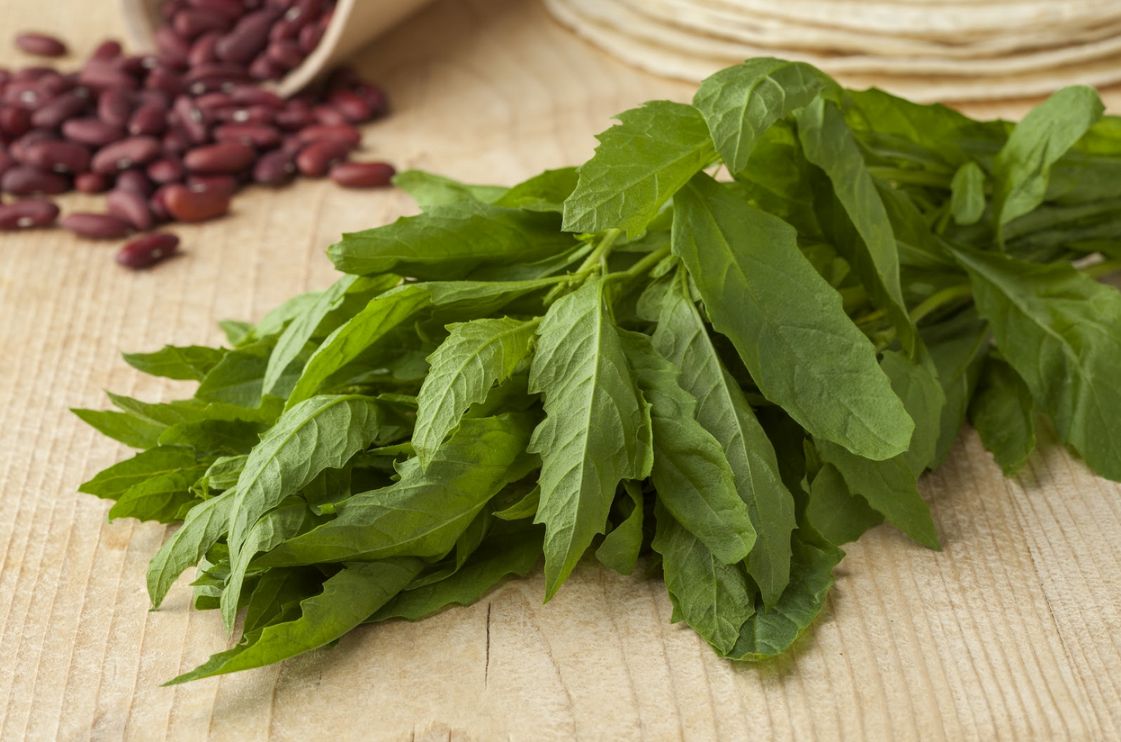What Is Epazote?
Epazote has been used for generations in traditional cooking
Epazote is a special herb that’s often used in cooking. It’s a small green leaf with a strong smell and taste. People love using it, especially when they cook beans. Bean can sometimes make people feel a bit gassy. Well, Epazote is famous for helping with that! It makes beans more enjoyable by reducing the gas they can cause.
Epazote is commonly used in Latin cooking, predominantly in Southern Mexico. According to history, its use dates back thousands of years to the ancient Aztecs and Mayans.
It is also known as wormseed, pigweed, Jesuit Tea, Mexican tea, and Paico (1). Epazote is a perennial herb growing up to four feet high (2). Both the leaves and stems can be eaten.
Does Epazote Reduce Gas?
It is commonly used to decrease gas resulting from eating beans
Even though scientists haven’t done specific studies to prove how it works, many people swear by its power to decrease gas. So, if you want to have beans without worrying about feeling bloated or having a stomach ache later, you might want to try adding a bit of Epazote to your cooking. It’s like a tasty secret ingredient that could make your meals even better!
How To Use Epazote
Add it to beans, soups, stews.
It can be used fresh or dried and is commonly used in bean dishes, soups, stews, and cheese dishes, such as quesadillas.
Epazote in English literally translates to stinky sweat or skunk sweat! Buy it in its fresh form, and you will learn how it earned that title. It has a strong, pungent odor that may at first deter you from using it. But when dried or cooked, the odor softens. The taste is a bit minty/lemony and adds complexity to the dishes it is cooked with. The fresh herb has a much stronger flavor than the dried leaves.

Other Potential Health Benefits Of Epazote
Epazote benefits
- Epazote contains a compound called ascaridole that is toxic to parasitic worms. The Mayans used it as an infusion/tea to treat parasite infections. This is still done today but should be used under the guidance of a practitioner. Ascaridole can be toxic to the liver when taken in large amounts. (3) (4).
- It does contain fiber, B vitamins, and antioxidants. The amount of these nutrients is small in the quantity of herb used for flavoring.
- If it does help your gas, it may improve your social life!
Warnings/Precautions
In the amounts recommended for flavoring food dishes, it is safe
- It is safely used in small amounts as a spice.
- In large amounts, such as in a tea or extract, caution should be taken
- Epazote is not recommended for women who are pregnant or breastfeeding. It can cause uterine contractions and increase the risk of premature birth.
- See additional safety precautions for epazote.
Where To Buy It
The dried form is easy to find in Latin grocery stores, in the spice aisle of well-stocked grocery stores, Walmart, and online, including Amazon. You can also find the live plant at many nurseries.
Instructions for Using Epazote In Cooking
How to use epazote
Use 1TBSP of the dried herb per cup of dry beans ( 3 cups cooked). If using a live plant, 2-3 sprigs per cup of dry beans are typical.
Epazote Recipes
Give these recipes a try.
Like other culinary herbs, such as basil and rosemary, Epazote can be used fresh or dried. It adds a flavor similar to oregano, fennel, or licorice.
Frijoles de la Olla ( beans in a pot) is the most traditional dish made with epazote.
- Frijoles de la Olla using dried epazote
If you’ve never tried Oaxaca cheese (pronounced wah-HA-ka), look for it in your Latin grocery store – it is a delicious flavor and is the cheese of choice for quesadillas made with Epazote – see the recipe below.
- Cheese quesadillas with fresh epazote
Give Epazote a try. You may be thankful you did!





